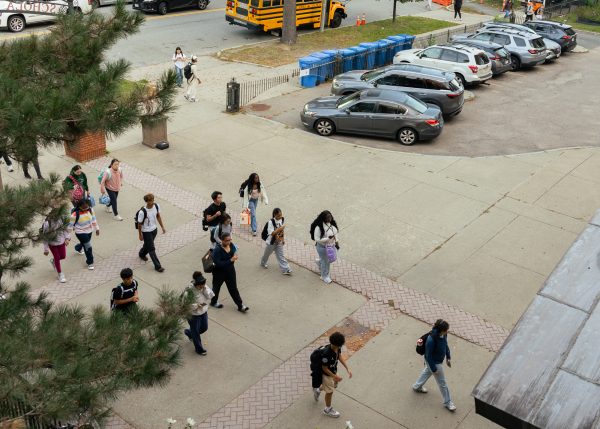Our Society Is Engineered for Men
“Raise your hand if you’re a woman in science who’s had to choose between missing out or wearing ill-fitting uniforms, safety equipment, or outdoor gear made for men because that’s all that was available.”
Biologist Jessica Mounts voiced her disappointment on Twitter after the National Aeronautics and Space Administration’s first all-female spacewalk in 2019 was canceled due to a lack of fitting spacesuits. Gender norms and the continuous cycle of female misrepresentation in society puts women at an inherent disadvantage, leading to inconveniences and even fatal consequences.
Beyond the realm of space, gender discrimination is widespread throughout our society, especially in the workplace. As reported by The New York Times, many offices today rely on a standard office temperature based on a “thermal comfort model” developed in the 1960s. The equation that developed this standard temperature factors in the metabolic resting rate of a 40-year-old man, about 154 pounds. Women, however, generally are physically smaller and have more body fat. This leads women to have lower metabolic rates, which therefore causes them to be more sensitive to colder temperatures. In fields where women are underrepresented, their comfort is not held at the same standard as their male counterparts. Instead of perpetuating the stereotype that “women are always cold,” perhaps it is time to reconsider what the system deems as normal.
Equipment ranging from scientific gear to construction and policing tools have also heightened risks for women. According to The Guardian, personal protective equipment issued to the police do not consider a woman’s larger chest or wider hips and thighs — both uncomfortable and hazardous for women, especially for those who work in dangerous situations. In one case, a female officer was stabbed and killed after she had removed her uncomfortable stab suit to use a hydraulic ram to enter a flat.
For her capstone project, Willa Davis (I) has analyzed the causes of the gender gap in STEM. Davis points out, “Women have been excluded from ‘men’s jobs’ (positions of power, science, construction, law enforcement) for so long that even when they enter these fields, they face barriers that still hold them back.” Simply not having gear that fits a woman’s body is one of them. For women pursuing work in a male-dominated industry, it is extremely harmful when the basic foundations of comfort and safety are not met.
The list goes on. The Washington Post reports that in a car crash, a woman is “47 percent more likely to be seriously injured and 17 percent more likely to die than a man,” as cars are designed with the blueprint of a five-foot nine-inch man — the average height for men in the United States. Many women often have to lean forward to see above the dashboard and use the pedals.
Women’s bodies are also often stereotyped to be complicated because their hormonal changes are seen to be too infrequent and their menstrual cycles too unpredictable. This misconception has discouraged research on women medically and in the safety of workplaces, with drugs and vaccines and even tools that do not take into account a woman’s body.
The problem is that society defines the “population’s average” as an average-sized man, which is an outdated and exclusive blueprint. If women are not comfortable in what they do nor are they given the basic necessities to succeed, the idea that “women do not belong in the workforce” will continue to be perpetuated.
Boston Latin School chemistry and physics teacher Ms. Katie Dunn adds, “I think this problem as a whole transcends biological sex — there’s a problem when design for people tries to reduce a population to the average. Everyone deserves the opportunity to pursue their goals or the right to effective treatment, and there is no ‘average’ person.”
It is important to factor in women’s needs in engineering designs, both to discontinue gender stigmas and to encourage more women to pursue their passions. With the growth of female representation in the workforce, it is only natural that society begins to push more inclusive standards.
Co-president of BLS Ladies’ Collective Mayara Ryland (I) remarks, “Some people do not even think there are issues because they have never been exposed to the actual disparities between women and men, but addressing this to more and more people will allow for more outreach and support on this important issue.” Striving for a more equitable society begins with reconstructing how society defines basic functions of comfort.







